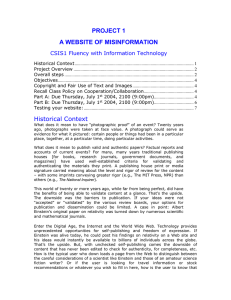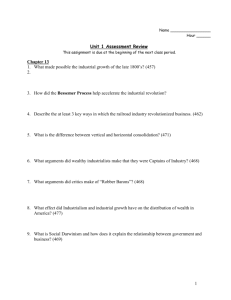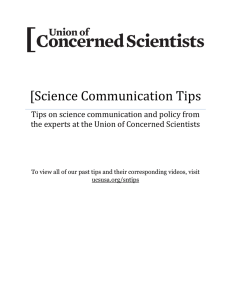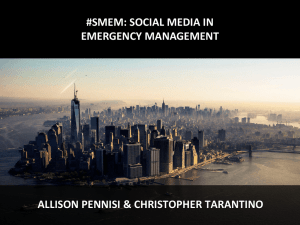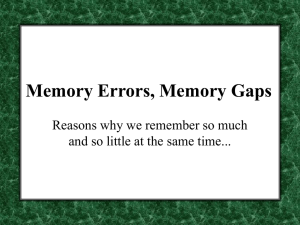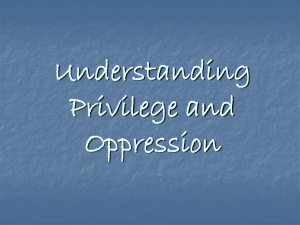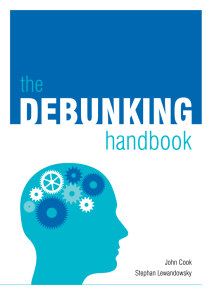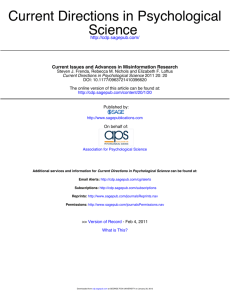Myth_Debunking_Exam_Question
advertisement
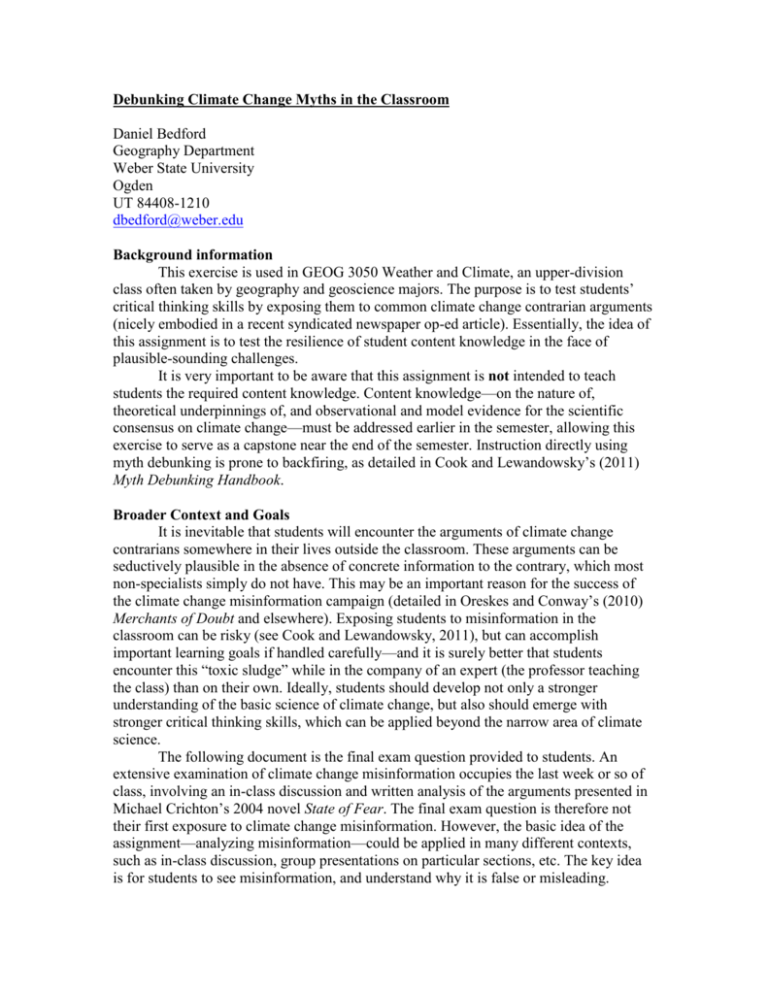
Debunking Climate Change Myths in the Classroom Daniel Bedford Geography Department Weber State University Ogden UT 84408-1210 dbedford@weber.edu Background information This exercise is used in GEOG 3050 Weather and Climate, an upper-division class often taken by geography and geoscience majors. The purpose is to test students’ critical thinking skills by exposing them to common climate change contrarian arguments (nicely embodied in a recent syndicated newspaper op-ed article). Essentially, the idea of this assignment is to test the resilience of student content knowledge in the face of plausible-sounding challenges. It is very important to be aware that this assignment is not intended to teach students the required content knowledge. Content knowledge—on the nature of, theoretical underpinnings of, and observational and model evidence for the scientific consensus on climate change—must be addressed earlier in the semester, allowing this exercise to serve as a capstone near the end of the semester. Instruction directly using myth debunking is prone to backfiring, as detailed in Cook and Lewandowsky’s (2011) Myth Debunking Handbook. Broader Context and Goals It is inevitable that students will encounter the arguments of climate change contrarians somewhere in their lives outside the classroom. These arguments can be seductively plausible in the absence of concrete information to the contrary, which most non-specialists simply do not have. This may be an important reason for the success of the climate change misinformation campaign (detailed in Oreskes and Conway’s (2010) Merchants of Doubt and elsewhere). Exposing students to misinformation in the classroom can be risky (see Cook and Lewandowsky, 2011), but can accomplish important learning goals if handled carefully—and it is surely better that students encounter this “toxic sludge” while in the company of an expert (the professor teaching the class) than on their own. Ideally, students should develop not only a stronger understanding of the basic science of climate change, but also should emerge with stronger critical thinking skills, which can be applied beyond the narrow area of climate science. The following document is the final exam question provided to students. An extensive examination of climate change misinformation occupies the last week or so of class, involving an in-class discussion and written analysis of the arguments presented in Michael Crichton’s 2004 novel State of Fear. The final exam question is therefore not their first exposure to climate change misinformation. However, the basic idea of the assignment—analyzing misinformation—could be applied in many different contexts, such as in-class discussion, group presentations on particular sections, etc. The key idea is for students to see misinformation, and understand why it is false or misleading. Response question (5 points) Please read the following article, reprinted in the Standard-Examiner in 2008. Explain whether you agree or disagree with the article, and explain why. ************************************************************************ COPYRIGHT RESTRICTIONS PREVENT POSTING OF THE COMPLETE ARTICLE The article utilized is “Is Global Cooling Next?” by DeRoy Murdock, syndicated and published in several different locations in 2008. It can be found online at the website Human Events, http://www.humanevents.com/article.php?id=26315
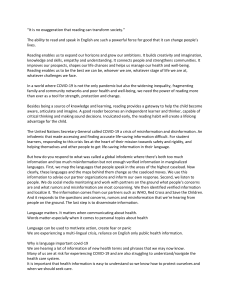
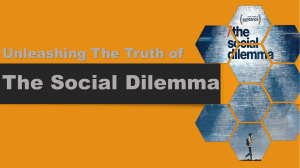
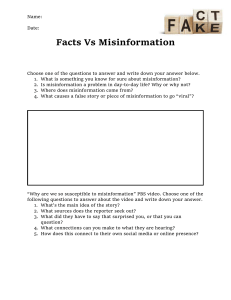
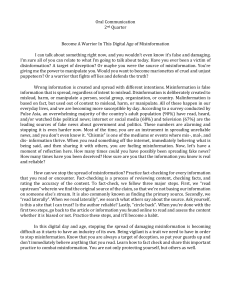
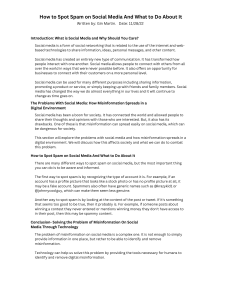
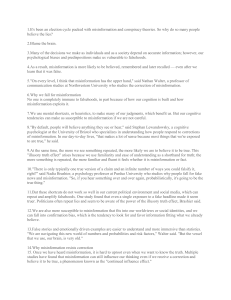
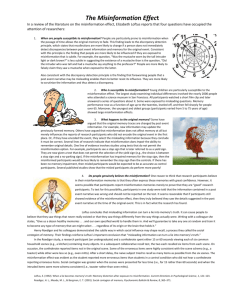
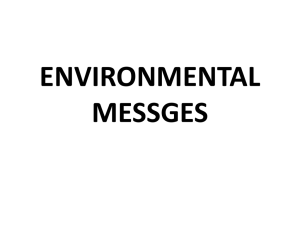
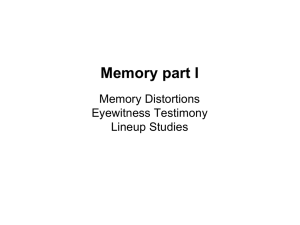

![Loftus.ppt [Read-Only] [Compatibility Mode]](http://s3.studylib.net/store/data/008863829_1-0381abc987ef7117cb83d540e08441db-300x300.png)
